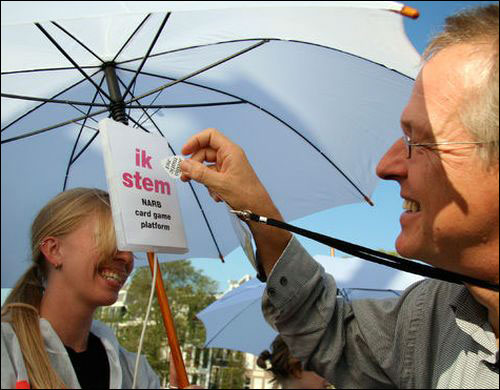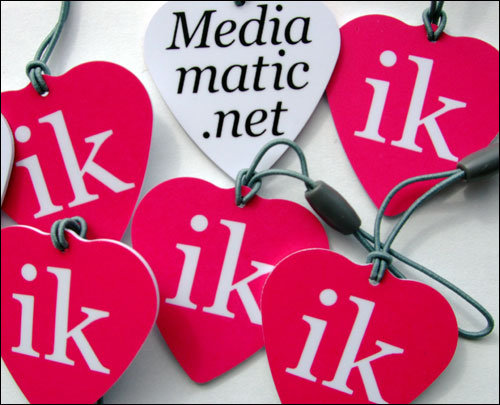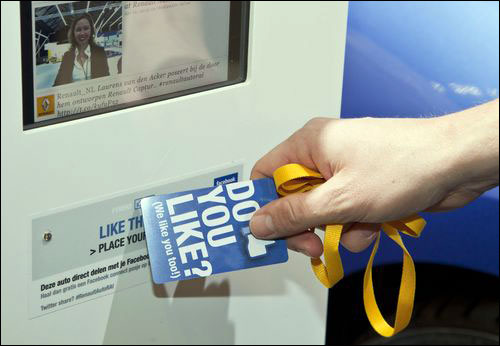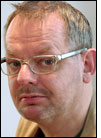Amsterdam-based Mediamatic Lab, a new-media arts, events and technology company, is bringing together attendees at live events via radio frequency identification, helping them to share their opinions and connect their social-media personas with those of new acquaintances.
The idea behind many of the firm’s activities is just that—to link the virtual and real worlds in creative, interactive ways that Mediamatic Lab’s customers will be willing to pay for. According to Mediamatic Lab, customers include businesses that hold workshops and events, museums that want interactive installations and arts festivals, to name a few. The company generates approximately 25 percent of its revenues with RFID-based applications.

Some of Mediamatic Lab’s applications work with Facebook‘s location-sharing feature, and allow members to sign in by touching a Near Field Communication (NFC) Mifare-based RFID card against a reader customized by Mediamatic Lab and set up at the event. When utilizing the NFC cards, users need not open a social-media application on their smartphones and search for their current location, paying telecommunications charges along the way. Once logged in, the smart card becomes a physical “like” button for use at other terminals at the event or installation. Each time that users want to “like” a particular program or segment, they scan their cards. Mediamatic Lab has creatively designed heart-shaped smart cards, which it calls ikTags, and has produced them in bright pink, green and other shades. According to the company, each ikTag contains a “generic Mifare tag that can easily be obtained from any vendor.”
In addition, the system has been used for live polling, such as voting on the best business idea at a conference, as organizers did at the ICT Delta 2010 conference. It has also been employed by conference attendees to have photos taken of themselves and be posted on a user-specified social network, as was done at Eurosonic Noorderslag 2011. If several individuals log in to have a photo taken together, they automatically become connected on their social network, says Willem Velthoven, Mediamatic Lab’s director and founder.
According to Velthoven, the system is popular at professional networking events and trade shows. For instance, Mediamatic Lab installed a similar RFID-based system on behalf of Renault. Last year, at AutoRAI, said to be the Netherlands’ largest automotive trade show, the automaker wanted to create a buzz by offering users the chance to “like” its cars displayed at the show on their Facebook pages. Working with Dutch social-media agency Blogmij, Mediamatic Lab designed a kiosk and 7,000 Mifare-based cards specifically for the Renault application, thereby enabling users to log in to the system and post which cars they “liked.”
The application offered Renault the chance to have its name posted on a large number of Facebook walls, and to differentiate itself from other automakers, says Jutta Vermeijs, a communications specialist at Renault in the Netherlands. She calls the deployment “a complete other way of experiencing an automotive show.”
Similarly, in summer 2011 Mediamatic Lab and Blogmij set up a kiosk at the Ushuaïa Ibiza Beach Hotel, on the Spanish island of Ibiza, for guests and visitors to use in order to photograph themselves and post pictures to their profiles.
Mediamatic Lab, which is affiliated with the Mediamatic Foundation, an arts organization, runs the system at its own art exhibition space located in central Amsterdam. Visitors can use their cards to “like” the exhibition space as a whole, or just particular parts of it.
Mediamatic Lab has also designed hardware for use during live voting, with readers built into umbrellas or hidden behind walls. A user scan his or her RFID card in the front of the statement that best matches that person’s opinion regarding a particular matter at hand. Results can then be projected in real time, and can be linked to an individual’s actual name, in order to create excitement during the voting process. Mediamatic Lab has enabled such polling at the Amsterdam Museum, in 2012, for example, as well as at the Liberty City and Picnic events, in 2009.
Regardless of the setting, Velthoven says, each kiosk can be deployed inexpensively since it includes a webcam, a USB-based Mifare card reader and an Internet-connected computer equipped with a touch screen.
“We always use Mifare technology because it’s easy for us to get and the readers are affordable,” Velthoven says. “The advantage of RFID is that it’s so easy for users to link themselves with their social-network identity, and users aren’t dependent on a smartphone.”
According to Velthoven, Mediamatic Lab is now working with the cultural sector within the Netherlands to turn the country’s widely used Mifare-based transit cards—known as OV-chipkaart—into loyalty cards for the arts. At present, there are 6 million OV-chipkaart users, Velthoven notes, though by the end of this year, he says, some 9 million people are expected to utilize the OV-chipkaart, which works on all trams, buses and trains in use throughout the entire country.
“We plan to provide a shared infrastructure for hundreds of organizations and support their use of the public-transport card as a loyalty card,” Velthoven states, “without requiring users to register again and again and again.” A pilot planned for summer 2012 will not test the technology per se, the company reports, but instead will test a rollout of the system on a large scale: Organizers are currently planning a high-density, wireless network of RFID readers at a summer arts festival that attracts thousands of attendees. This network, which Mediamatic Lab calls ikPoll, will feature wireless, battery-powered OV-chipkaart readers that employ the ZigBee protocol to communicate with a central server connected to the Internet.
“The advantage of using the ZigBee technology to set up the network lies in the fact that we are not so dependent on infrastructure, such as Internet access for the ikPoll or powering the ikPoll,” a company spokesperson explains. “We can set-up a bigger network with less infrastructure. This means that we have a higher flexibility in deploying our interactive installations.”
“RFID makes lots of things that used to be complex very easy and transparent,” Velthoven says. “It really makes a difference—the types of games and fun things we are doing with RFID.”




